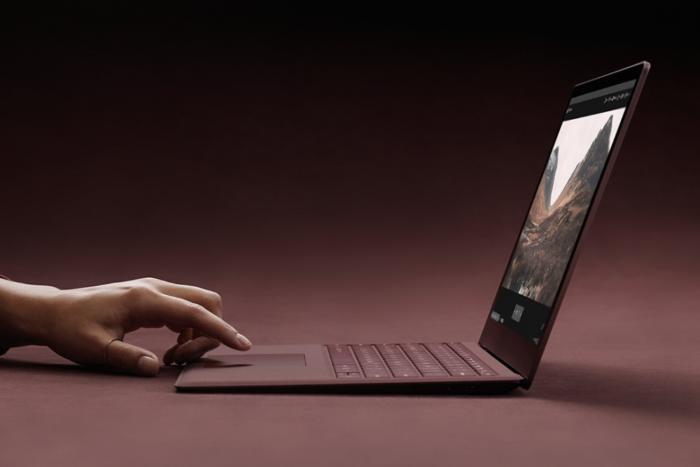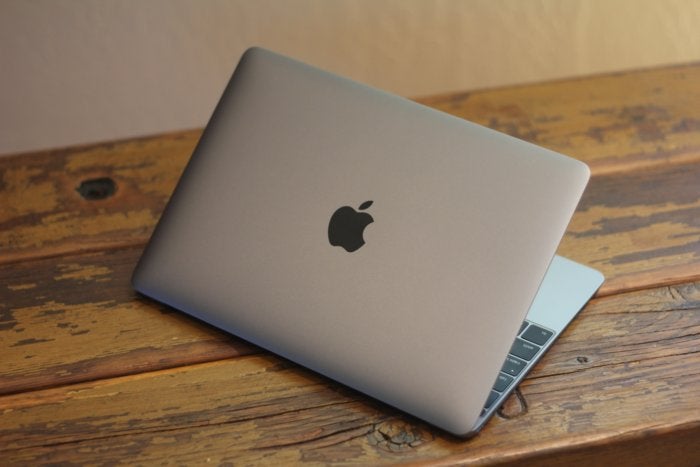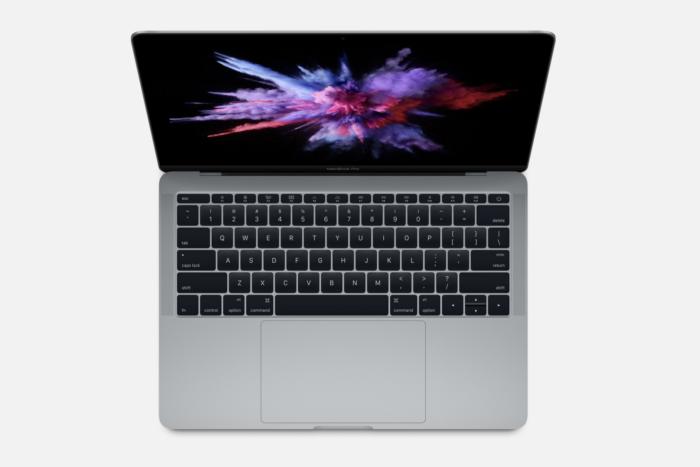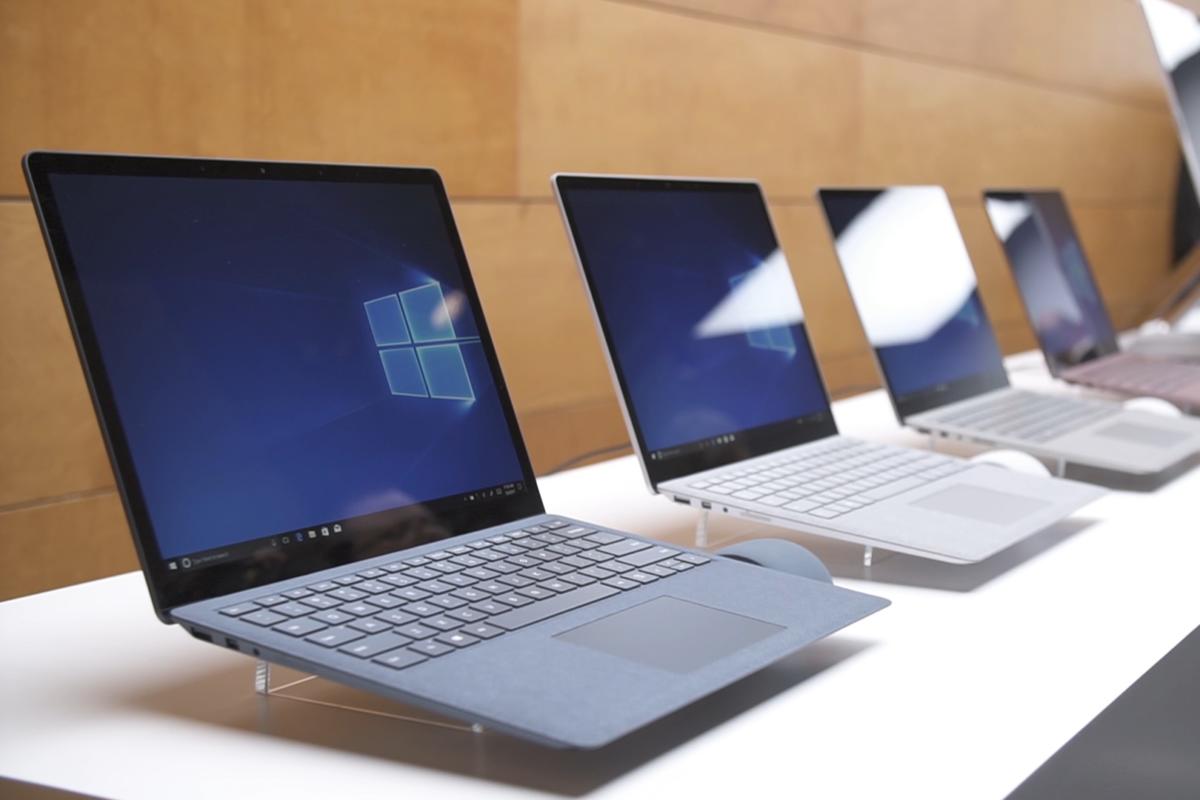How does the Surface Laptop stack up to Apple’s notebooks?

The MacBook Air has been such a hit for Apple the past few years that even Microsoft is making one. Starting at $999, the Surface Laptop sure looks good–it’s got a MacBook Air price, a wedge shape, weighs 2.76 pounds, the latest Intel core i5 processor, and a high-resolution display.
Given that Apple hasn’t updated the MacBook Air in ages, the Surface Laptop attacks Apple at a vulnerable spot right in the midst of a product transition. Well played by Microsoft, but if you look a bit closer it sure looks like Apple’s got the Surface Laptop surrounded.
The $999 laptop
If there’s any place that Microsoft has got Apple over a barrel, at least for the moment, it’s at what you can buy for $999. The processors in the MacBook Air are two generations behind those in the Surface Laptop, and the Air’s screen isn’t Retina.
The MacBook Air is a great deal, but will never get a better screen.
But look closer: The Air’s got 8GB of RAM to the Surface Laptop’s 4GB. Microsoft cut the base specs of the Surface Laptop to the bone to get it to $999, and Apple doesn’t seem to be willing to ship a computer with 4GB of RAM anymore. The Surface Laptop also only has a single USB 3 port, while the Air has two. And while the Surface Laptop’s Mini DisplayPort works fine with external displays, the MacBook Air’s pulls double duty as a Thunderbolt 2 port.
Still, the Surface Laptop is a modern computer and the Air is a couple of years out of date. If there’s any glaring weakness in Apple’s laptop line, it’s the company’s inability (or refusal) to bring its new, updated MacBook models to within hailing distance of the $999 price of the MacBook Air. Until Apple can do that, I guess the MacBook Air will keep kicking around? At some point it seems like Apple will need to bite the bullet and make a MacBook available for $999 or $1099, just so it can send the Air to the graveyard at last. In the meantime, Microsoft is there–with a high-resolution screen, if not a whole lot of RAM.
The MacBook versus the Surface Laptop
The true successor of the MacBook Air is, of course, the MacBook. And at $1299, the MacBook and Surface Laptop are pretty similar. The MacBook is three-quarters of a pound lighter, though its Intel m5 processor isn’t as powerful as the i5 processor on the Surface Laptop. Both devices offer 256GB of storage, 8GB of RAM, onboard Intel graphics, and a choice of colors. The Surface Laptop’s got a slightly larger screen, while the MacBook’s is a slightly higher resolution.
 Jason Snell
Jason SnellThe single-port MacBook stacks up to the $1299 Surface Laptop pretty well.
These are very similar laptops, though Apple has traded some weight and thinness for some processor power. Each has a single USB port, though Microsoft’s port doesn’t need to double as a charging connector or video-out port. But Apple’s choice of USB-C makes it seem like a more forward-thinking design; Microsoft’s single USB–3 connector already seems old school.
In the end, it’s clear that with a single refresh–an extra port here, a newer processor family there–the MacBook is more than a match for the Surface Laptop at $1299, unless you believe that most regular users would prefer an extra three-quarters of a pound in exchange for a little more processor power. I don’t, to be honest.
The MacBook Pro versus the Surface Laptop
 Apple
AppleThe MacBook Pro without the Touch Bar has a couple advantages over the Surface Laptop, but also a higher price.
Around $1499, things get even more interesting. Because Apple chose to brand its 13-inch laptop without a Touch Bar as a part of the MacBook Pro family, it’s easy to forget that it is in many ways also a successor to the MacBook Air. While the MacBook traded weight for processor power, the 13-inch MacBook Pro (without Touch Bar) kept the weight–but kept the processor power, too. Unfortunately, its similarities in terms of specs are a bit lost in the price tag, which is $500 higher than the starting price of the MacBook Air.
Still, compare it to the Surface Laptop: With 8GB of RAM and a 256GB SSD, it’s in the ballpark–albeit $200 more expensive than that $1299 Surface Laptop model. The specs are the same, the displays are similar, and the MacBook Pro has two USB-C ports with support for Thunderbolt 3.
Apple’s advantages
When comparing Macs to PCs it’s easy to lose track of the biggest differentiator–Macs run macOS, and PCs run Windows. The fact is, if you prefer to run Windows, the Surface Laptop appears to be a great piece of hardware to run it on. If you prefer macOS–well, only Apple’s laptops will do that, and that’s part of their appeal.
 Jorge Arzac/IDG
Jorge Arzac/IDGThe Surface Laptop comes in four colors: Burgundy, Platinum, Cobalt Blue, and Graphite Gold.
It is interesting that the Surface Laptop runs Windows 10 S, a variant of Windows 10 that will only run software that appears in the Windows App Store. One of the great advantages of the PC is that it can run the massive catalog of Windows software that’s out there–but the Surface Laptop won’t do that unless you pay for a full version of Windows 10, at which point Microsoft says your experience may degrade. It’s weird.
In the end, though, what does the arrival of the Surface Laptop tell us about the current state of affairs in the world of Mac laptops? Apple’s got two solid answers to the Surface Laptop in the MacBook and the MacBook Pro without Touch Bar–one optimized for size, the other for speed. The MacBook could sure use an update, and it wouldn’t hurt if the MacBook Pro’s starting price got shaved down a little bit.
At some point, Apple needs to sell a modern laptop within hailing distance of $1000. But I appreciate Apple’s refusal thus far to sell a $999 starter MacBook with the weak specs of the Surface Laptop–128GB of storage is tight, and 4GB of RAM is not so great either. In the meantime, the MacBook’s positioned quite nicely… it just needs an update.


